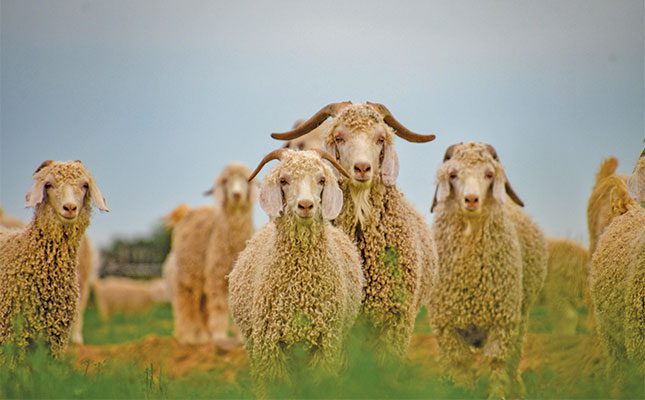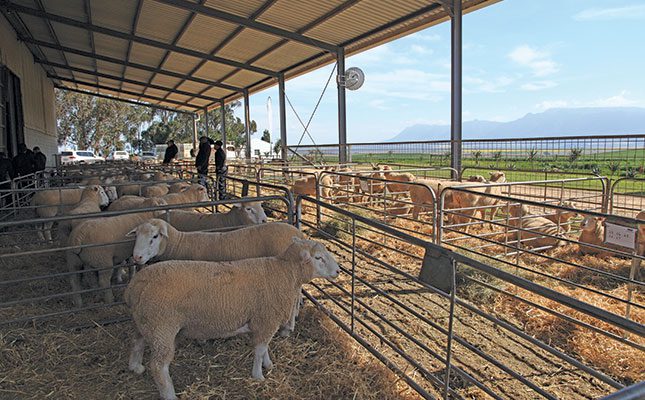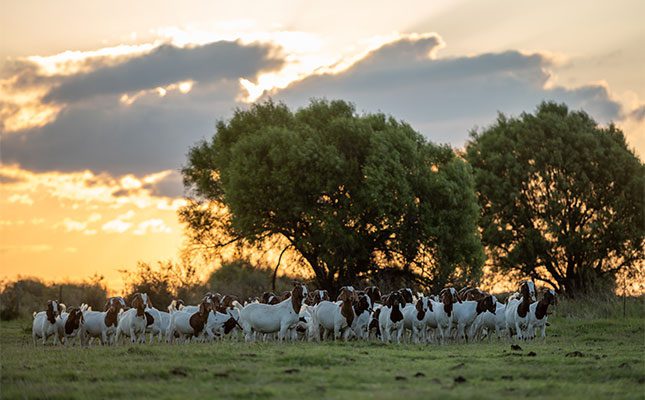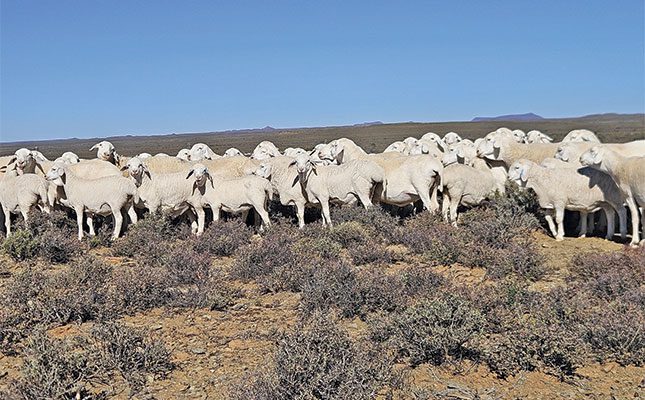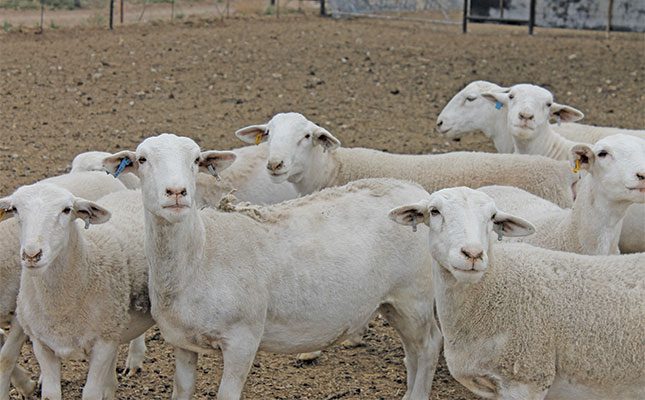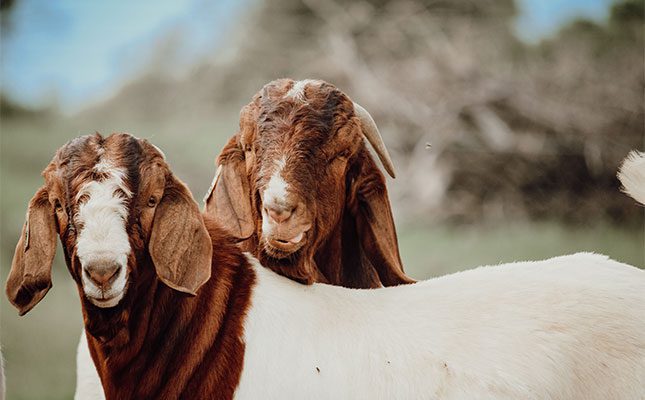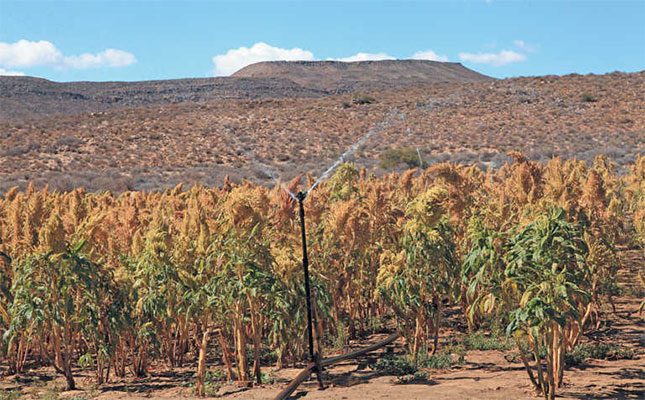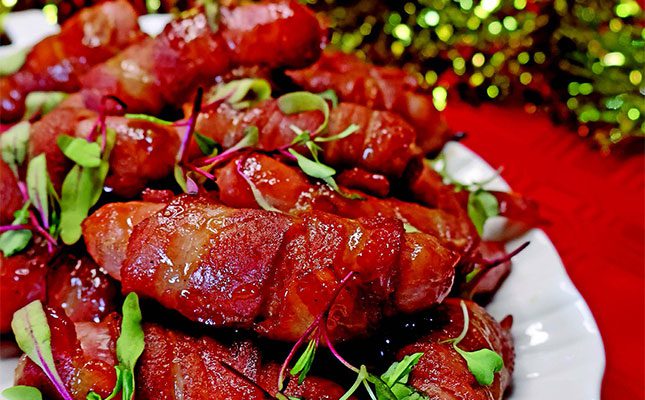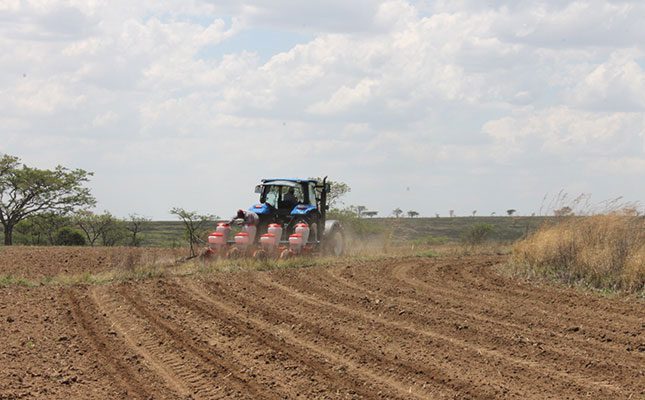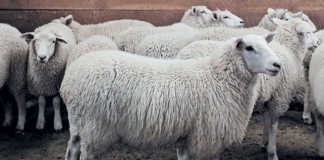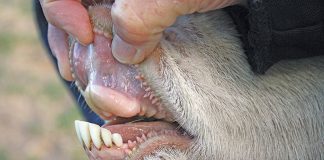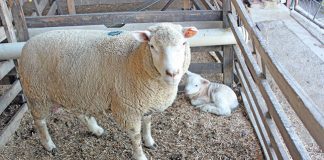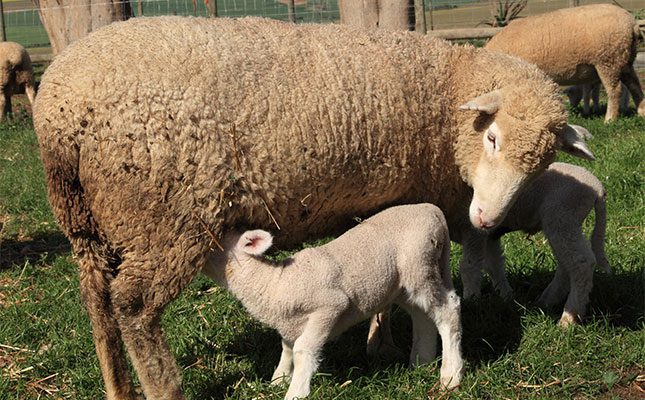
Photo: Kinko Dormer Stud
“Although the Dormer was primarily bred for use in the winter rainfall region, it proved to be highly adaptable to other regions and is therefore being used in all regions of South Africa for slaughter lamb production,” say Liezel Grobler, secretary of the Dormer Sheep Breeders’ Society of South Africa, and Marius Eksteen, head of the society’s marketing portfolio.
While modern Dormers have retained their robust constitution over the years, growth performance, carcass quality, and the breed’s adaptability and mothering ability have notably improved.
“In an attempt to promote and [further] improve the breed, courses are regularly being presented, while breeders participate at shows, exhibitions, and slaughter lamb competitions,” say Eksteen and Grobler.
“The national Dormer sale takes place annually during September in Bloemfontein. Stud breeders are compelled to participate in production recording, and the association’s number-one rule is that only production-recorded animals may be sold at the national sale.”
The Dormer’s strong points
According to Eksteen and Grobler, the Dormer manifests all the economically important traits for it to be categorised as the ideal mutton breed. These are as follows:
- Exceptional growth rates and early maturity;
- Superior carcass quality with good marbling;
- High fertility and lambing percentages;
- Good mothering ability and milk production;
- Adaptability to a wide range of grazing conditions; and
- Strong disease and parasite resistance in comparison with many other breeds.
“Fertility is one of the breed’s strong points, and breeders specifically select for multiple births. Twins are preferable, although triplets are common, and quadruplets, quintuples, and even sextuplets have been recorded.”
A lambing percentage of 150% and higher is quite common for the breed.
“Large numbers of surplus lambs ensure the profitability of the industry. This also broadens the selection base, which in turn speeds up genetic improvement,” say Eksteen and Grobler.
The unlimited breeding cycle facilitates more than one harvest per year, and the lambing season can be managed to maximise pasture use.
Mothering, milk production, and growth rates
Outstanding mothering traits ensure a high growth rate and weaning percentage.
“Dormer lambs generally maintain an average daily gain of 400g up to 100 days [old], but gains of up to 500g are not uncommon,” they say.
“The weight of the lamb at 42 days is a true reflection of the milk production of the dam, while weight from 42 to 100 days indicates the inherent growth ability of the lambs.”
Early maturity
The Dormer’s early maturity ensures slaughter lambs are ready for market at an early age. Dormers produce high-quality carcasses of around 16kg to 22kg as early as three months old.
“This characteristic is also sought-after where crossbreeding is done for slaughter lamb production with late-maturing breeds such as the Merino,” say Eksteen and Grobler.
However, the benefits of early maturity don’t end with younger slaughter lambs. In fact, early maturity also holds advantages for ewes.
“Ewes can be rested more often and can produce more wool; more ewes can be kept per hectare; and it is only necessary to carry mature animals when pastures are poor,” they explain.
Young ewes are also able to lamb from 12 to 18 months old, which results in an increased turnover and limits the generation interval.

